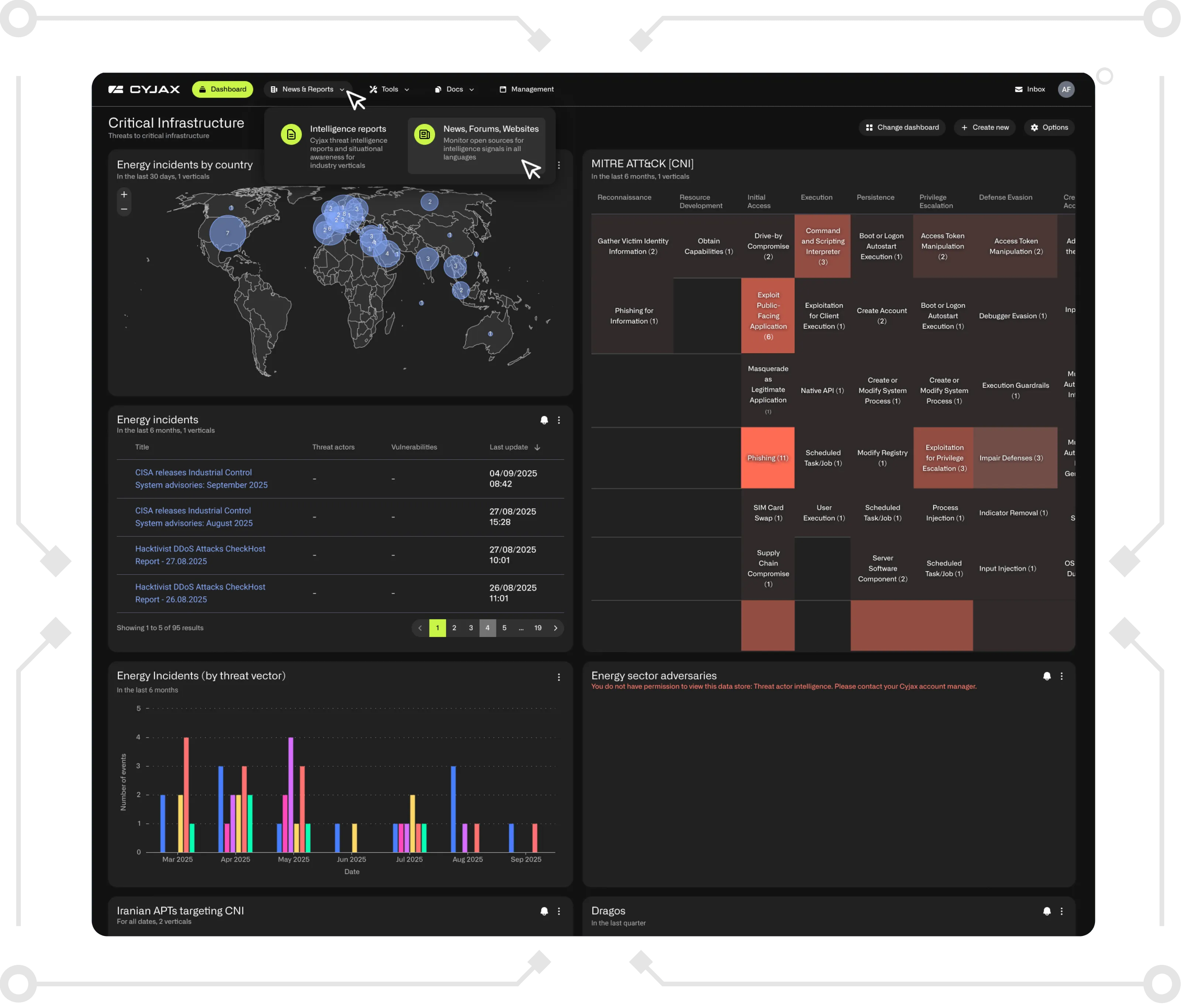Threat Intelligence Isn’t Just for SOCs: How Marketing, Legal, and Risk Can Benefit Too
Threat intelligence isn’t just for the SOC: it’s a force multiplier across the business. Marketing can get ahead of brand impersonation, fake domains and disinformation, stopping PR crises before they erupt. Legal benefits by getting early warning of data leaks and threats, helping meet compliance deadlines (like GDPR), avoiding penalties and reducing legal exposure. Risk teams need clear visibility of external threats and supply chain vulnerabilities so they can map threats to business goals, improve resilience, and provide quantifiable risk data to leadership.

“Threat intelligence isn’t just about stopping attacks, it’s about enabling smarter decisions across the entire organisation.”
Introduction
Within a Security Operations Centre (SOC), threat intelligence is indispensable. It provides the context analysts need to cut through noise, correlate indicators of compromise (IOCs), and prioritise alerts based on real-world risk. Without it, SOC teams would be overwhelmed, drowning in log data, chasing false positives, and reacting blindly to incidents rather than proactively mitigating them. In this sense, threat intelligence isn’t just a useful resource; it’s the cornerstone of modern SOC operations.
Yet focusing solely on the SOC overlooks the broader strategic value of threat intelligence. Cyber threats rarely affect only technical systems, they ripple across brand reputation, regulatory exposure, and business continuity. This means that the insights drawn from threat intelligence can, and should, inform functions beyond IT security.
Departments such as Marketing, Legal, and Risk are increasingly finding that access to actionable threat intelligence empowers them to work more effectively. Whether it’s Marketing teams monitoring for brand impersonation campaigns, Legal ensuring compliance with data protection regulations, or Risk teams aligning threat exposure with enterprise-wide risk appetite, the benefits are tangible.
By extending threat intelligence out of the SOC and into these business-critical areas, organisations move from a siloed, reactive security posture to a more integrated, intelligence-driven enterprise.
Marketing: Protecting Brand and Reputation
Marketing teams are often on the front line of customer trust, and cyber threats targeting brand presence can undermine that trust in seconds. Attackers routinely create phishing domains, fake social media accounts, and brand impersonation campaigns to trick customers into handing over credentials or payment details. Phishing remains a primary attack method, as most cyberattacks begin with a phishing email. Research shows that 57% of organisations face phishing scams weekly or daily, and nearly 1.2% of all emails sent are malicious, equating to 3.4 billion phishing emails every day.
The consequences go far beyond individual scams. A single impersonation campaign can trigger loss of customer confidence, reputational damage, and even financial liability, all of which directly impact the organisation’s bottom line. Negative publicity spreads quickly across digital platforms, and without early warning, Marketing teams are left responding reactively, often too late to contain the damage.
This is where threat intelligence adds strategic value. By continuously monitoring for fraudulent use of logos, detecting fake domains before they’re weaponised, and surfacing disinformation campaigns in their early stages, Marketing can act decisively. For example, insights gathered from both the clearnet and darknet can help teams pre-empt PR crises by aligning with communications and customer service teams before an incident escalates.
Marketing isn’t just about brand growth, it’s about brand protection. With the right threat intelligence, teams can safeguard their reputation as effectively as SOC analysts safeguard infrastructure
Legal: Ensuring Compliance and Readiness
For Legal teams, the impact of cyber threats often materialises in the form of regulatory obligations, potential litigation, and financial penalties. Frameworks such as GDPR, PCI DSS, and the UK’s Data Protection Act place strict requirements on how organisations handle and report breaches. Failure to comply can result in heavy fines and long-term reputational damage.
The challenge is that regulators expect organisations to act quickly, often within 72 hours of discovering a breach under GDPR. Without timely visibility into data leaks, exposed credentials, or emerging threats, Legal teams risk missing these critical reporting deadlines. As CYJAX highlighted in its analysis of the evolving regulatory landscape, the volume and complexity of compliance requirements are only increasing, particularly with new directives like the EU’s NIS2.
Threat intelligence directly supports Legal functions by identifying breaches early, surfacing exposed data before it spreads, and providing evidentiary support for investigations. This proactive insight allows Legal teams to meet notification obligations, guide internal response processes, and protect the organisation from avoidable regulatory and reputational fallout.
Risk: Strengthening Enterprise-Wide Resilience
Risk teams face a unique challenge: aligning cyber threats with the organisation’s overall risk appetite. Without clear visibility into external exposures and supply chain vulnerabilities, it’s difficult to quantify the true business impact of emerging threats. This gap leaves enterprises exposed, not just to cyber incidents, but to operational disruption and reputational fallout.
Cyber insecurity is consistently ranked as a major concern, and in some European countries, it is listed among the top three risks. This underscores the growing recognition that cyber threats are not only a technical problem but also a systemic risk to business continuity and economies.
The NIST Cybersecurity Framework highlights the importance of integrating threat intelligence into risk management to enhance resilience at both technical and strategic levels. By doing so, organisations can move beyond reactive defence and ensure that cyber risk is embedded within broader enterprise risk management.
Threat intelligence provides risk teams with the actionable data needed to map emerging threats to business objectives, assess third-party and supply chain risks, and inform continuity planning. It also strengthens board-level reporting by replacing abstract risk discussions with quantifiable, intelligence-driven insights, ensuring leadership can make decisions with a realistic view of the threat landscape.
Conclusion
While SOCs remain the “nerve centre” of cybersecurity operations, threat intelligence is far more than a technical tool; it is a strategic enterprise asset. When leveraged beyond the SOC, it empowers Marketing to protect brand reputation, enables Legal to stay compliant and responsive, and allows Risk teams to make data-driven decisions that strengthen organisational resilience.
Organisations that confine threat intelligence to security teams miss an opportunity to turn insights into action across the business. Leaders should prioritise embedding threat intelligence into all critical functions, ensuring that every department, not just IT, can anticipate threats, mitigate impact, and safeguard both reputation and operations in an increasingly complex digital landscape.
Get Started with CYJAX CTI
Empower Your Team. Strengthen Your Defences.CYJAX gives you the intelligence advantage: clear, validated insights that let your team act fast without being buried in noise.




